The biceps is considered the most “masculine” muscle group, because most athletes are focused on pumping this area. Beginning athletes who do not have impressive volumes especially prioritize the muscle. Training biceps for mass is not only the use of effective exercises, but also the competent construction of the program and control of training volumes. All this provides a steady increase in size for one of the slowest growing muscles in the body.
How to pump up your biceps to gain mass
It is important to understand that the issue of pumping up biceps is not so much doing physical exercises, but rather a combination of key conditions and factors:
- Proper nutrition with a calorie surplus and sufficient intake of amino acids from protein foods.
- Muscle recovery.
- Control of training volume by week or cycle in the program.
One of the most popular mistakes is excessive attention to working out the zone and the desire to get quick results. Athletes want to see the results of their efforts and train their biceps at least 2 times a week. Moreover, the biceps takes part in other exercises, especially deadlifts. As a result, athletes overtrain and stifle their muscle growth potential.
Important to rememberthat biceps “does not like” processing. Like other areas, the biceps muscle needs rest.
Another aspect worth paying attention to is the operating mode. Some athletes get significant growth from high-repetition training and pumping, others from powerful strength work for 5-8 repetitions per set. It is impossible to predict which regimen will be best for a particular athlete. This needs to be determined experimentally or a laboratory analysis done to determine the ratio of fast and slow muscle fibers in the biceps (which for most people will be unreasonably expensive and unnecessary).
Best exercises
The biceps is a unique muscle, since the concept of the best exercise depends not on the movement itself, but on the ability to concentrate the load during its implementation. This is worth considering, since neuromuscular concentration is the most important condition for progression.
1. Barbell curl
This is a classic of bodybuilding, with the help of which almost all professional athletes at all times pumped up their biceps.
Technique:
- Grasp a barbell (preferably an EZ bar) with a grip at or slightly wider than shoulder width.
- Raise the barbell by bending your elbows.
- Pause briefly, then lower the weight to the starting position at a slower pace.
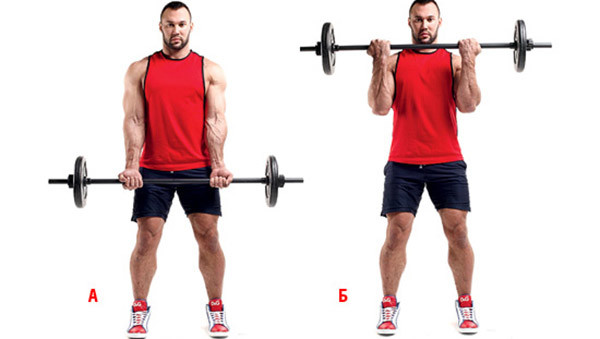
To switch the load to the external head, it is recommended to place your elbows slightly to the sides, and to work the internal beam, it is recommended to use a wide grip.
2. Seated dumbbell curls
In this exercise you can achieve maximum amplitude and stretching of the muscle, which is great for gaining mass.
Technique:
- Set the back of the bench at an angle of 45 degrees, sit on the bench and take the dumbbells in your hands. The back and pelvis are pressed tightly against the back.
- Begin to lift each arm alternately, bending it at the elbow.
- At the bottom, straighten your arm fully at the elbow joint, but do not relax the biceps, this will help maintain tension and improve the efficiency of the lifts.
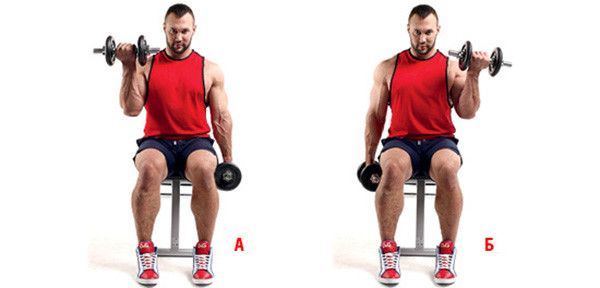
3. Hammer curls
One of the best movements for thickening the arm is to focus on the outer (usually lagging) bun.
Technique:
- Stand straight with your feet shoulder-width apart. Hold dumbbells in your hands with a neutral grip (palms facing each other).
- Raise your arms, bending your elbows so that the dumbbell moves towards the front deltoid.
- Pause, then return to the starting position.
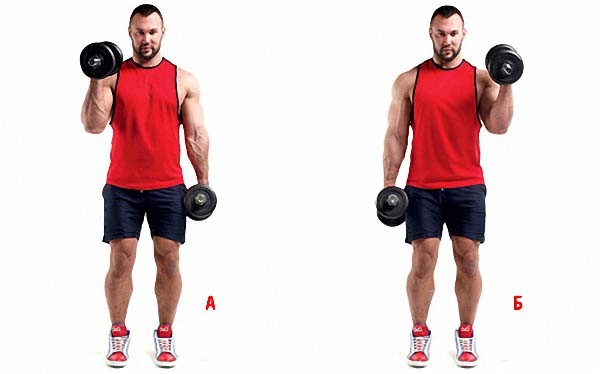
4. Lifting dumbbells on a Scott bench
The most popular isolation movement for biceps. Develops mass well and is ideal for pumping and failure reps.
Technique:
- Place the bench so that you can sit in a chair and disable your back muscles.
- Take dumbbells or a barbell.
- Bend your arm at the elbow, pausing briefly at the top.
- When extending the arm, it is not necessary to fully straighten the elbow, but full range of amplitude will contribute to better growth of mass and strength.
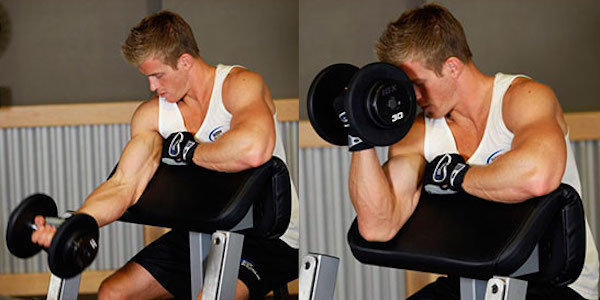
To concentrate the load on the biceps, it is better to do the movement with dumbbells, separately with each hand.
5. Reverse Grip Pull-Up
The pull-up bar is a great movement for the biceps if you use a reverse grip.
Technique:
- Grab the bar with an underhand grip at shoulder level.
- Pull yourself up until your chin is above the bar.
- Lower yourself down at a slow pace.
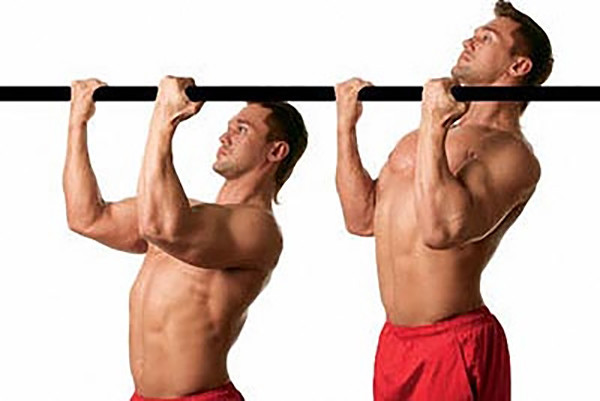
To improve the effect, do not straighten your elbows completely, this will help maintain tension.
Recommendations for training
- The issue of sets and reps plays an important role if you are able to determine which training regimen produces the best results. Often, athletes use high-repetition failure training to increase strength, which works best for many athletes.
- Try to do no more than 3 biceps exercises, 2-3 working sets. It is recommended to give up the last sets of each set. This is enough to provide the biceps with a full load. It is also important to remember that you should not adopt the programs of professional athletes who most often use pharmacology. This radically changes the approach and increases capabilities, especially the athletes’ recovery abilities, strength and endurance.
- For strength techniques, it is optimal to do 8-12 repetitions in 3-4 sets. For “multiple repetitions” – 15-20 repetitions. Select the weight so that after 15 repetitions you feel a strong burning sensation and increasing muscle failure.
ad_2]


Leave a Comment